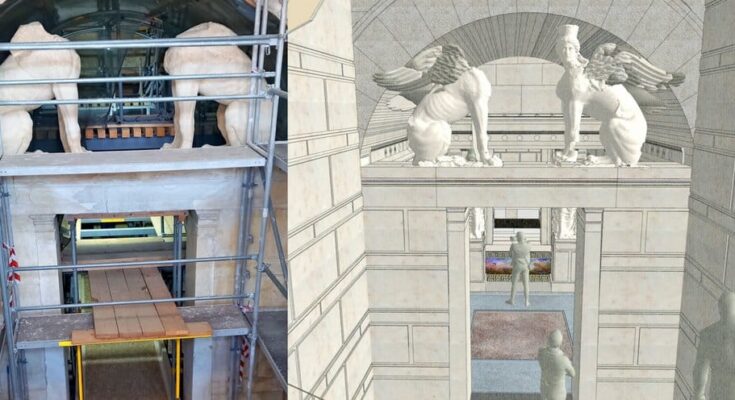The archaeological site of the Amphipolis tomb in Eastern Macedonia, Greece is set to open to visitors by 2028, it was recently announced.
This is a truly remarkable development and has been anticipated for many years by experts and Greek antiquity enthusiasts alike.
The ancient Amphipolis tomb is one of the most significant archaeological discoveries of the 21st century, which captivated the entire country in 2014, when it was first made public.
Since then, significant efforts have been taking place to restore the site and make it accessible to visitors from all over the world.
The Amphipolis archaeological site will be fully restored and open to the public by the end of 2027 or early 2028.
This monumental burial site is located in the Kasta mound near the small village of Mesolakia in Eastern Macedonia, northern Greece. Since its discovery ten years ago, it has been under the spotlight of publicity and intense study. Exquisite restoration efforts have been taking place since then with meticulous work and extreme caution.
The impact of Greece’s Amphipolis tomb discovery
The Amphipolis tomb managed to capture global attention from the first moment it was discovered. This was when archaeologist Katerina Peristeri and her team unearthed the monumental entrance to the burial monument. The entrance revealed two stunning headless sphinxes. The discovery sparked a true media frenzy in the summer and autumn of 2014.
Reporters and journalists from around the world flocked to the small village of Mesolakkia, trying to report on the groundbreaking find that captivated minds in Greece and beyond.
Unprecedented excavation effort
Over the past ten years, the archaeological site of Amphipolis has experienced significant changes. The top priority of the archaeologists and the Greek authorities was to conduct support works to secure the stability of the monument. They have also been conducting significant restoration efforts, transforming the site into a modern archaeological site.
Experts believe that the tomb of Amphipolis and its excellent condition make it an unparalleled example of ancient architecture that not many other places in Greece have the honor to host.
Understandably, various theories have circulated since its discovery about the origins of the monument and the reason for its construction.
So-called “secrets” hidden within the tomb continue to circulate amongst many. However, scientists are adamant that they should only focus on real data and facts rather than unsubstantiated theories.

Stunning artifacts being discovered at Amphipolis
Significant artifacts have been discovered over the course of the last decade due to the fact that the archaeological works continue uninterrupted at the Amphipolis site.
The abduction of Persephone by Hades, the king of the Underworld according to Greek mythology is a stunning mosaic that was unearthed at Amphipolis a few years ago, fascinating Greece.
The female figure is shown with fiery red hair, and archaeologists have expressed their certainty that the mosaic depicts the abduction of Persephone by Hades. That makes the bearded man crowned with the laurel Hades and not the person buried in the tomb, as many originally believed.



